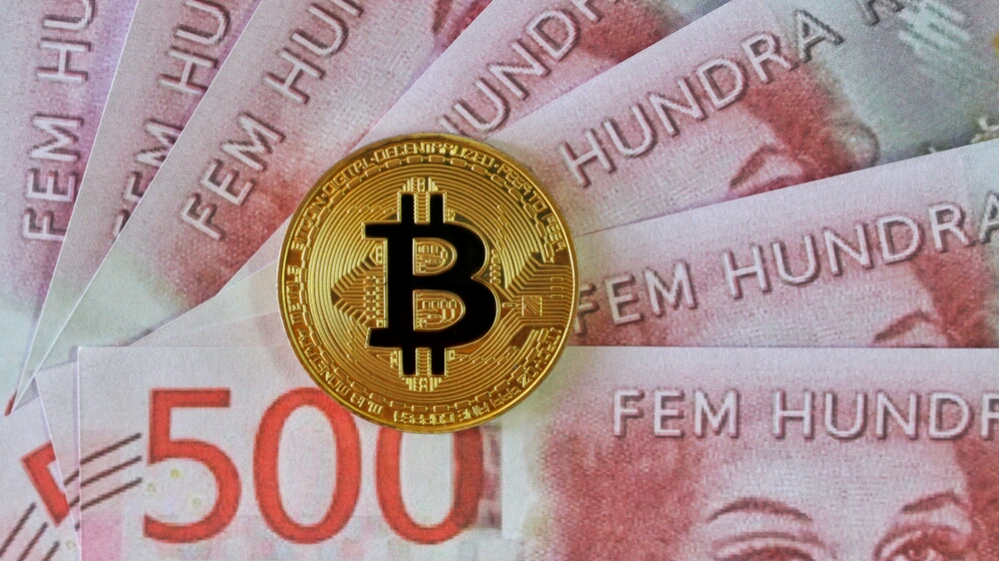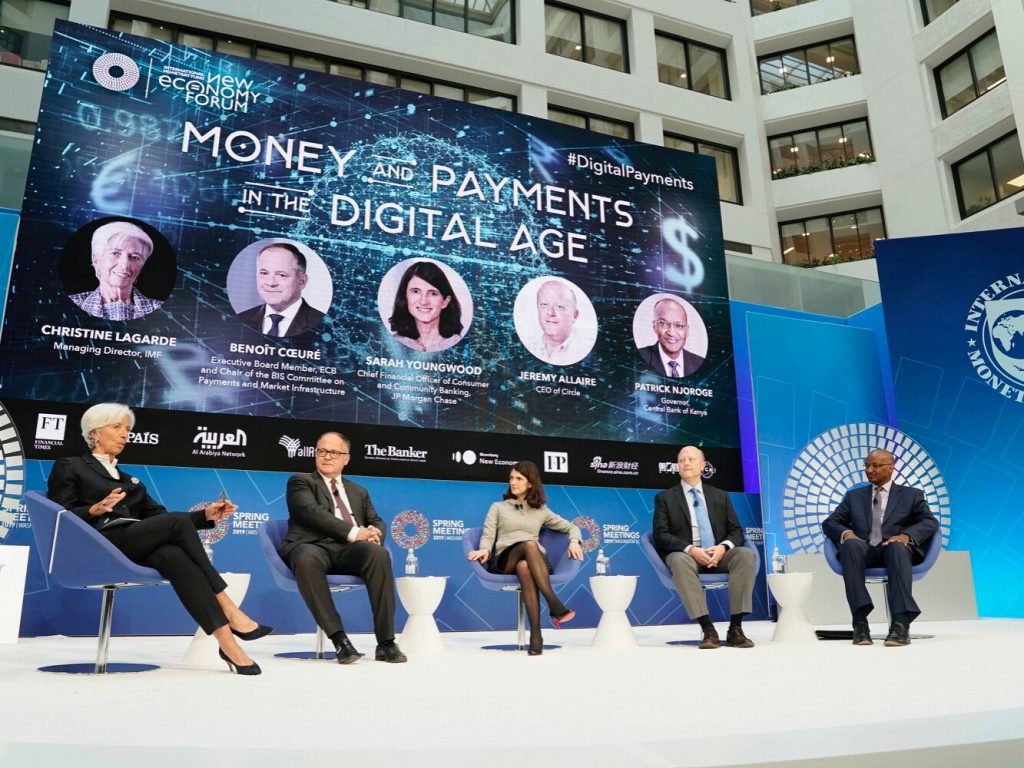Latest news about Bitcoin and all cryptocurrencies. Your daily crypto news habit.

Central bank digital currencies (CBDCs) featured prominently when global financial leaders met for this year’s World Bank Group and International Monetary Fund (IMF) joint Spring Meetings in the United States. Faced with emerging disruptive technologies like Bitcoin, their discussions also focused on how money and payments are taking on new forms throughout the world. There wasn’t any determined conclusion to the debates, but the IMF’s Christine Lagarde admitted that cryptocurrencies have shaken the established global financial order.
Also read: The Struggle to Buy Bitcoin in Crypto-Starved Botswana
50% Chance Sweden Will Issue CBDC in Next 10 Years
It is not surprising that CBDCs continue to be a topic of interest at the Spring Meetings, held this year in Washington D.C. from April 8-12. Lagarde, the managing director of the IMF, has in the past urged central banks to consider issuing digital currency to make transactions more secure. She argues that state-backed cryptocurrencies could satisfy public policy goals related to financial inclusion, consumer protection, privacy and fraud prevention.
At the latest round of meetings, central bank officials experimenting with CBDCs, including those from Canada, Sweden, and Uruguay, provided updates on their work while debating the potential features and technological design of such currencies. In one of the panel discussions, titled “CBDC: Should central banks issue digital currencies?,” Swedish central bank deputy governor Cecilia Skingsley revealed that there was a greater than 50% chance the Risbank would issue its own digital currency, e-krona, within the next decade.
“The discussion around CBDCs is very important because of the notion of money and how we organise societies around money,” Skingsley stated. In Sweden, the value of bank notes and coins in circulation now accounts for just 1% of GDP, she revealed. That compares with about 10% in the Eurozone and 20% in Japan. Skingsley said just 1 in 10 people use cash for payments in Sweden, a development which has made the e-krona a possible alternative. She explained:
People now find that digital payments and keeping their money in digital form is much more suitable to their needs. It means that within a couple of years, given current trends, Swedes will no longer have access to central bank money, because notes are the central bank money.
Non-Cash Transactions Soar
Cashless transactions or various kinds have soared around the world in recent years. Bitcoin, for example, was created to challenge the conventional financial system and return the ownership of money to the people, beyond the reach of the state. But this vision has not endeared it to global financial gurus who are steeped in tradition. Unsurprisingly, many national governments have raised concerns about cryptocurrencies and have called for tighter regulation.
To counter these threats, a number of central banks have started to ponder whether and how to adapt CBDCs. About 25% of central banks around the world are now actively exploring the possibility of issuing state-backed cryptocurrencies, even though only a handful of trials have been reported. The Eastern Caribbean Central Bank and the Central Bank of the Bahamas have both announced advanced plans to conduct blockchain-based CBDC pilots.
The Case for Central Bank Digital Currencies
In Canada, a central bank digital currency is steadily and carefully taking shape. Speaking at the IMF Spring Meetings, Bank of Canada deputy governor Timothy Lane illustrated the costs and benefits, risks and opportunities of issuing CBDCs. One of his key contributions centered on the relationship between interest rates and a central bank digital currency. Lane elaborated:
Some people have suggested that CBDC should be interest-bearing, including that it should allow the possibility of negative interest. Partly, that also would be the reason for introducing it, which is the idea that if you want to provide more money for policy stimulus you could breakthrough the zero lower bound.
However, Lane added that “for this whole thing to be viable the public would actually have to be convinced that this is something they want to hold. I suppose this is part of the primary motivation [for issuing CBDCs].”
Both the World Bank and IMF appear resolute on virtual money. The Bretton Wood institutions announced an in-house experimental blockchain token of their own, aptly named Learning Coin. The idea is for staffers to have a hands-on approach to learning about blockchain technology. Through a purpose-built mobile phone app, employees can read curated content and watch videos related to blockchain in exchange for earning the valueless Learning Coin, which can only be redeemed in-house.
Special Drawing Rights
But the concept of a unique unit of exchange isn’t exactly new to the IMF. In 1969, the organization created what it called Special Drawing Rights (SDR) – an asset that almost functions as a currency. SDR is used for transactions between central banks and the IMF; more or less what some countries are trying to achieve with large value, blockchain-based interbank payment experiments, for example, Jasper I & II in Canada, Khokha in South Africa, and Stella I in Europe. Similarly, at least six international banks have revealed plans to issue stablecoins backed by fiat currency, on IBM’s World Wire, to allow for faster and cheaper cross-border remittances and payments.
There are some similarities in both systems. The value of the SDR is based on a basket of five currencies – the U.S. dollar, the euro, the Chinese renminbi, the Japanese yen, and the British pound sterling. Stablecoins derive their value from fiat currency. Canada’s Timothy Lane indicated that it will take a little more time for central bank digital currencies to become useful for cross-border payments as that requires greater regulatory collaboration. Others are simply encouraged that the CBDC discussion has remained open and topical at the IMF conferences.
“It’s clear that the government and private sector are both very interested in learning more about CBDC and what the future of digital payments might look like,” Ashley Lannquist of the World Economic Forum told news.Bitcoin.com. “It’s commendable that the IMF and World Bank Group have decided to embrace and feature dialogues on central bank digital currency, setting an important example for other international organizations.”
What do you think about the IMF’s position on central bank digital currencies? Let us know in the comments section below.
Images courtesy of Shutterstock..
Express yourself freely at Bitcoin.com’s user forums. We don’t censor on political grounds. Check forum.Bitcoin.com
Disclaimer
The views and opinions expressed in this article are solely those of the authors and do not reflect the views of Bitcoin Insider. Every investment and trading move involves risk - this is especially true for cryptocurrencies given their volatility. We strongly advise our readers to conduct their own research when making a decision.


